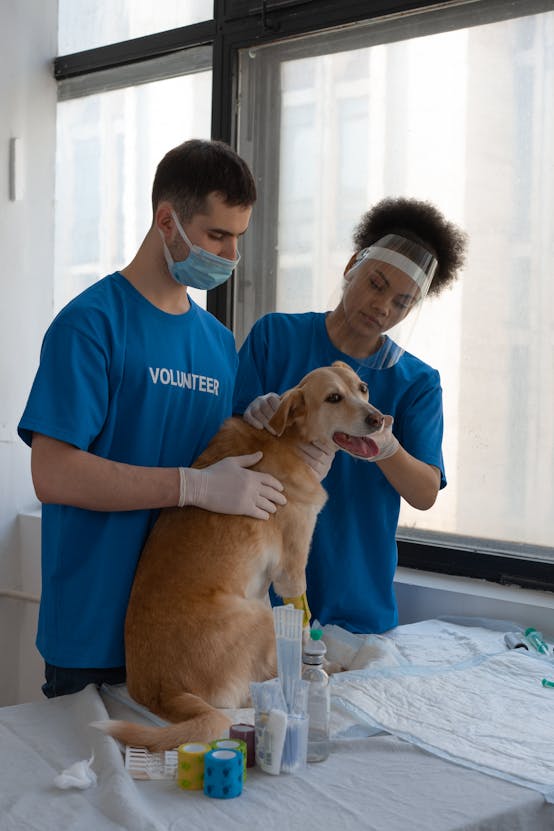Behavioral Adaptations of UK Dogs in Urban Environments
Understanding how city life shapes canine behavior
Urban dog behavior UK reflects significant adaptations to the unique challenges of city life. Dogs living in busy towns and cities develop coping mechanisms to deal with frequent noise and the hustle of everyday urban environments. Continuous exposure to traffic, sirens, and crowded streets often leads to gradual desensitization, helping city dogs stay calmer despite loud, unpredictable sounds.
Also to discover : How Are Dogs Adapted to Urban Living in the UK?
City dogs adaptation includes mastering crowded public spaces and public transport systems. Urban dogs learn how to navigate busy pavements, confined lifts, or buses without excessive stress. This adjustment is crucial, as it allows them to accompany owners confidently, even in highly populated areas.
UK dog behavior modification also appears in social interactions. Many urban dogs become more selective in their greetings and playstyles. Constant exposure to numerous dogs and strangers means dogs often signal boundaries early to conserve energy and avoid overstimulation. However, positive socialization remains vital to maintaining balanced urban dog behavior UK and ensuring these pets thrive despite their environment’s fast pace.
This might interest you : What Behavioral Traits Make Dogs Ideal Companions?
Influences on Canine Behavior in UK Cities
Exploring how city life shapes our dogs’ actions
Living in UK cities presents unique urban environment impacts on dogs that influence their behavior significantly. Dogs regularly encounter diverse stimuli—from bustling traffic noises to crowded pavements—which can elevate stress levels or sharpen alertness depending on the individual dog’s temperament. This continuous exposure shapes their reactions in both positive and challenging ways.
Moreover, UK city living for pets often means limited access to private gardens. Constrained living spaces in apartments or terraced homes can restrict natural behaviors such as digging, running freely, or exploring, which dogs would typically exhibit in more open rural settings. This limitation may lead to frustration or boredom unless owners compensate with enriched indoor activities or frequent outdoor exercise.
Regulated walking routines and mandatory leash requirements further influence canine behavior in urban areas. Leash rules, while essential for public safety and order, can limit a dog’s freedom to engage with their environment fully, affecting socialization and exercise quality. Owners must therefore balance these constraints by selecting varied routes and times to keep their dogs mentally and physically stimulated in the city context.
Comparison: Urban vs Rural Dog Behavior in the UK
Understanding urban vs rural dog behavior UK reveals clear distinctions shaped by environment. City dogs often face higher environmental stressors such as noise, traffic, and crowded spaces. This exposure tends to make urban dogs more alert yet sometimes anxious, requiring careful socialisation strategies. Conversely, rural canine habits exhibit lower stress levels due to quieter surroundings and more natural spaces.
Exercise and play patterns vary significantly. Urban dogs typically rely on structured walks and indoor play because of limited open areas, while rural dogs enjoy freer exploration over fields and trails. These lifestyle differences influence energy expenditure and mental stimulation, impacting overall behavior and well-being.
Scientific studies highlight these trends, showing urban dogs might develop heightened vigilance and sometimes exhibit more repetitive behaviors due to confinement and stimuli overload. On the other hand, rural dogs display a wider range of social interactions, often engaging with other animals and people in less pressured settings. Recognising these differences is vital for tailoring care, training, and enrichment that aligns with each dog’s living context.
Practical Guidance for UK Dog Owners
Helping dogs thrive in urban environments requires focused city dog care tips UK that address their unique challenges. Managing urban dog stress starts with understanding the triggers—noise, crowds, and limited green spaces. To support adaptation for city dogs, it’s essential to create consistent routines including regular walks during quieter times and providing safe, quiet zones at home.
Evidence-based strategies involve enriching your dog’s environment with interactive toys and puzzle feeders that stimulate their minds while indoors. Using calming tools like anxiety wraps or pheromone diffusers has proven helpful for dogs overwhelmed by city stimuli. Exercise remains crucial; incorporating agility or obedience training sessions can improve behavior and reduce stress.
Owners carry the responsibility to monitor signs of stress such as excessive barking or withdrawal and to seek expert advice when needed. Encouraging gradual socialization and positive reinforcement assists urban dogs in adjusting to city life. Adopting these practical techniques ensures well-being and fosters positive experiences for dogs living amid the hustle and bustle of UK cities.



